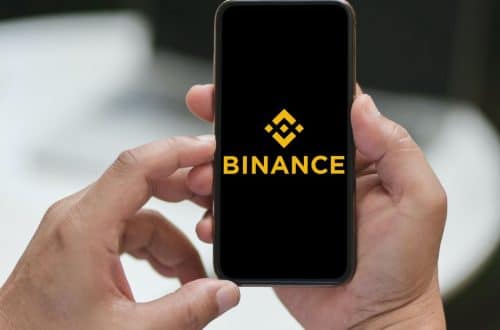
How Does Bitcoin Mining Work
With traditional systems such as government and banks, they issue more money whenever they see fit. However, Bitcoin is popular as no one can do this since the issuance of Bitcoin revolves around mining. Mining is an extremely intelligent process of confirming Bitcoin transactions.
It also records the transactions on a decentralized ledger at the same time. But how does Bitcoin mining work? In this guide, we will take a look at the fundamental of Bitcoin mining and how all of the processes behind it work.
How Does Bitcoin Mining Work?
Bitcoin mining is essentially the in-depth process of discovering Bitcoins. A lot like gold, Bitcoins are limited and there can only be 21 million in circulation. Again, like gold, you allocate resources and hard work in order to extract it.
Though, unlike gold, Bitcoins are minted using intelligent computer power from competing computers all over the world. While it may be tricky to understand at first, the Bitcoin mining process is actually genius. After all, everyone is able to try their luck at mining for free.
No one is actually guaranteed to profit from it, though. But the intelligent computers used to mine Bitcoin ensure the functionality and security of the network. Bitcoin serves multiple purposes which is all you need to know for now.
These purposes include:
- Securing the Bitcoin network.
- Penalizing bad actors in the network by making it unprofitable to go against the system.
- Incentivizes miners to allocate their sources to the Bitcoin network.
- Confirms Bitcoin transactions.
- Ensures that Bitcoin is hard to get.
- Ensures the decentralization of Bitcoin which makes it free P2P money.
Why Mine Bitcoins?
The world of bitcoin mining can feel confusing and arduous at first glance. After all, terms like bitcoin forking and bitcoin proof of workflow through the community with ease. But why do people mine bitcoin? Is there a point to the whole endeavor?
Actually, yes! You see, bitcoin is one-hundred percent digital. As such, like with all other digital products globally, bitcoin runs the risk of copying, counterfeiting, and double-spending on the same coin. It’s a challenge the crypto world faces daily.
Mining resolves such issues by ensuring it is overly expensive and resource-heavy to “hack” into the bitcoin network in any way, shape, or form.
The Importance of Bitcoin Mining
People can send any digital assets, including Bitcoin, at any time. However, this doesn’t mean much unless someone is keeping tabs on every single one of them. With digital assets being super easy to copy, this is very true.
In order to have fully functioning digital cash, you need to ensure that you keep a record of who has paid what to whom. This is basically what banks do for us. However, if there are no organizations to oversee it, how do we know that person A has even sent Bitcoins to person B?
How is double spending halted where person A sends the same Bitcoins to Person C? Well, the answer, of course, is Bitcoin mining. The Bitcoin network works effectible to replace the need for banks and other intermediaries by processing all network transactions, adding them to a list, and locking them into blocks.
It is basically the miners doing all the work. They allocate all their power to confirming transactions and recording them into a distributed public ledger. For Bitcoin mining, miners need a special computer and Bitcoin program (client).
Once the Bitcoin client is on your computer, you are a miner. From there, you can compete with rival miners in order to solve complex math puzzles. Every ten minutes, all of the competing computers will go up against one another in order to solve a block with the latest transaction data in it.
Cryptographic hash functions are crucial here.
What Are Bitcoin Hashes
When it comes to Bitcoin hashes, it can get a little confusing. Essentially, every block that has been solved is quickly added to a public ledger. From there, the distributed public ledger consists of a huge list of blocks that make up the Bitcoin blockchain.
The Bitcoin distributed ledger, also known as a blockchain, is a public record of every single transaction that has taken place on the network. Because of the fact, the file is public, it is easily explorable by anyone who is using a Bitcoin block explorer. Every ten minutes, a new block is added to the ledger.
This means that the blockchain size is always growing and increasing. Everyone is kept in the loop with a new copy and a new block is always circulating between miners. This way, everyone knows what is going on at all times.
Now, I bet you’re wondering “What purpose does this serve?”
Well, in traditional systems, there is a trustworthy ledger. That means that there must be a trusted entity or person involved that oversees it to guarantee that no one is able to tamper with it. Miners play this absolutely crucial role when it comes to the Bitcoin network.
When a block of transactions is ready to process, the miners come in to process it. They then apply the SHA-256 Cryptographic Hash Algorithm. At his point, the seemingly random collection of numbers and letters becomes what is known as a hash.
The hash is then safely stored together with the block at the end of the blockchain. At this point in time, it serves as proof of work and validation. Though, how do we know that hashes are reliable?
The answer to this is that it is quite easy to make a hash out of any data included in a Bitcoin block. However, it is essentially impossible to decrypt the data by simply looking at the hash. This is because it is entirely random.
Every single hash is unique. If you are to even change one symbol in the original input, this will result in an entirely different hash. That means that it is entirely impossible to predict the output.
The only way to match it is by simply taking a blind guess which is exactly what miners do. They go forth and use other pieces of intelligent data.
One of these pieces of data is the hash of the last block. After all, each block’s hash contains the same hash as the previous block. Realistically, it works a lot like a digital wax seal.
That then guarantees that the produced block, much like every block before, is entirely legitimate. If the block is falsified, other miners are able to view and reject it. To put it simply, a fake transaction would entirely change not only a block but also its original hash.
Because of the fact that each block’s hash is used to create the next block, this affects every single block on the chain. If someone checks it, they would be able to easily notice the difference between real and fake in no time at all. This is because they don’t match the ones that are already verified.
That is how miners are able to seal off a block. Now let’s discover more about the competition aspect.
Bitcoin Mining Process
The 64-Digit Hexadecimal Number
Every bitcoin transaction features a corresponding 64-digital number. But it’s not solely a number, it does include letters, too, which can make the whole process far more confusing during the mining process.
This 64-digit hexadecimal number is the target hash. When a miner goes to work, they’re making guesses by generating “numbers only used once” to discover the 64-bit hexadecimal number associated with the bitcoin transaction in question.
The first to generate the full number essentially wins the pot. They’re rewarded with bitcoin of their own to trade or sell as they please. It’s a random number generator on steroids.
What Do ‘64-Digit Hexadecimal Numbers’ Have to Do With Bitcoin Mining?
A “hash” is the 64-digit hexadecimal number a bitcoin miner produces when completing a puzzle to verify a bitcoin transaction for the decentralized blockchain ledger. But it’s a race. You have to be the first to solve the puzzle to rake in lucrative rewards for the time and energy spent mining.
The number itself is less than or equal to the target hash number, which makes for a lot of guesswork during the problem-solving process. This is why many miners utilize high-end computing equipment capable of running solutions around the clock at a high rate per minute in the bitcoin community.
What is a Hash Rate?
A hash rate is the total measure of computational power each second utilized during the bitcoin mining process. In layman’s terms, it’s how fast a hash puzzle is solved by a crypto miner.
A computer with a high bitcoin hash power is, overall, more efficient and can handle more data per second than the next computer.
You would typically measure hash rate in units of kilo, mega, giga, or tera, and in recent years, we’ve witnessed the bitcoin hash rate rise drastically, while market prices for cryptocurrency declined. As bitcoin processes rise, hash rates reduce due to the increased demand and complexity of puzzles involved with each transaction.
How Does Mining Confirm Transactions?
For a successful cryptocurrency to operate, transactions must be safe and secure. A bitcoin transaction confirmation ensures no double-spending of coins and no counterfeiting.
But how is it done? Bitcoin mining utilizes its computing power to solve complex hash puzzles that verify blocks of bitcoin transactions. Once complete, these blocks are updated on the decentralized blockchain ledger to keep account of all spending and usage.
Is Bitcoin Mining Legal?
Whether or not bitcoin is legal or not solely depends on your geographical location. In many countries, however, the line between bitcoin illegal and bitcoin legal remains relatively small.
Overall, you should check your country’s legal status and laws regarding bitcoin and cryptocurrency before you decide to start mining. In countries like the U.S., it is completely legal to mine bitcoin so long as you pay taxes.
Why Does Mining Use So Much Electricity?
When it comes to bitcoin mining electricity usage, we’re talking about thousands of miners worldwide running highly energy-intensive computers, sometimes banks of computers, to verify and add transactions to the bitcoin blockchain. The total energy usage depends on the number of miners at any given time.
That being said, cryptocurrency as a whole aim to go one-hundred percent green, renewable energy in the coming years!
Competing for Bitcoins
Now we have deciphered that the only way to seal off a block is to successfully guess the output of the hash correctly, we can continue. The most efficient way to do this is by randomly guessing on computers. All miners from around the world compete with each other to see who can use the mining software faster.
The miner who can get in first to do this mines the block and reaps the reward from it. It takes millions of random computer-generated guesses from all over the world. The incentives are to keep miners mining and, in turn, the system working effectively.
Because of the fact that the block rewards are always decreasing, the price of Bitcoin is will likely appreciate over time.







